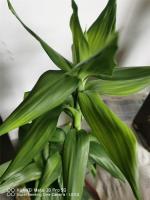When to Plant Tomatoes in Zone 6b
Zone 6b is characterized by cold winters and warm summers, making it a great region for growing a variety of crops, including tomatoes. However, planting tomatoes at the wrong time can lead to poor yields or even crop failure. In this article, we will explore when is the best time to plant tomatoes in Zone 6b.
The Average Last Frost Date
The first step in determining when to plant tomatoes in Zone 6b is to find out the average last frost date for the region. The last frost date is the approximate date by which the risk of frost has passed, and it is safe to plant tomatoes outdoors.
In Zone 6b, the average last frost date occurs around mid-April. However, it is important to keep in mind that this date can vary depending on the specific location within the zone and the prevailing weather patterns. To be on the safe side, it is best to check with your local agricultural extension office or consult a gardening guide for your specific location.
Preparing the Ground
Before planting tomatoes, it is essential to prepare the ground to ensure optimal growth and yield. The first step is to choose a location that receives at least six hours of direct sunlight daily.
Next, remove any weeds, rocks, or other debris from the area and till the soil to a depth of at least six inches. Add compost or other organic matter to the soil to ensure it is rich in nutrients and well-draining.
Choosing the Right Tomato Variety
When it comes to tomato varieties, there are numerous choices available, each with its unique needs and preferences. Some prefer hot and sunny conditions, while others do better in cooler spots.
For Zone 6b, it is best to choose tomato varieties that mature in around 80-90 days. Early-maturing varieties are ideal because they can ripen before the first frost in the fall.
Caring for Your Tomato Plants
After planting your tomato plants, it is crucial to care for them correctly for optimal growth and yield. The first few weeks after planting are crucial, and it is essential to water them regularly to prevent the soil from drying out.
Once the tomato plants are established, it is important to provide them with adequate support to prevent the plants from bending or breaking under the weight of the fruits. You can use tomato cages or stakes to help support the plants.
It is also essential to fertilize the plants regularly to ensure they receive the necessary nutrients for optimal growth and yield. Finally, keep a lookout for pests and diseases that can affect your tomato plants and take appropriate measures to prevent or treat them.
Conclusion
Knowing when to plant tomatoes in Zone 6b is crucial for achieving a bountiful harvest. By following the tips and guidelines outlined in this article, you can ensure that your tomato plants thrive and produce tasty and healthy fruits.

 how many times do yo...
how many times do yo... how many planted tre...
how many planted tre... how many pine trees ...
how many pine trees ... how many pecan trees...
how many pecan trees... how many plants comp...
how many plants comp... how many plants can ...
how many plants can ... how many plants and ...
how many plants and ... how many pepper plan...
how many pepper plan...

































